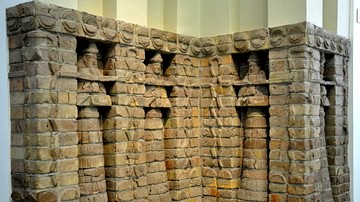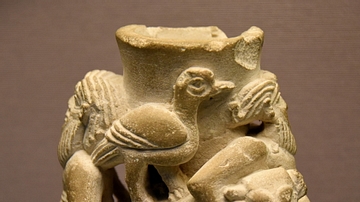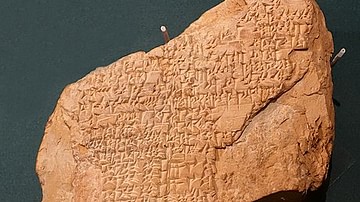Illustration
The Uruk Trough, one of the earliest examples of formal religious art from Mesopotamia. It was probably a cult object in the temple of Inanna (Ishtar); it cannot be used as a trough or basin. The carving shows sheep approaching a reed hut from which lambs emerge. The meaning of the scene is unknown but probably reflects the fertility of flocks under the protection of Inanna. The high volutes on either sides of the hut and elsewhere are symbols of the goddess Inanna. From Uruk (Warka), Southern Mesopotamia, modern-day Iraq, Late Uruk Period, 3300-3000 BCE.
The British Museum, London.
About the Author
Cite This Work
APA Style
Amin, O. S. M. (2017, September 06). The Uruk Trough. World History Encyclopedia. Retrieved from https://www.worldhistory.org/image/7192/the-uruk-trough/
Chicago Style
Amin, Osama Shukir Muhammed. "The Uruk Trough." World History Encyclopedia. Last modified September 06, 2017. https://www.worldhistory.org/image/7192/the-uruk-trough/.
MLA Style
Amin, Osama Shukir Muhammed. "The Uruk Trough." World History Encyclopedia. World History Encyclopedia, 06 Sep 2017. Web. 16 Apr 2025.





![Offering to Inanna, Warka Vase [Top Register]](https://www.worldhistory.org/img/c/p/360x202/10591.jpg?v=1724658839-1724658887)


